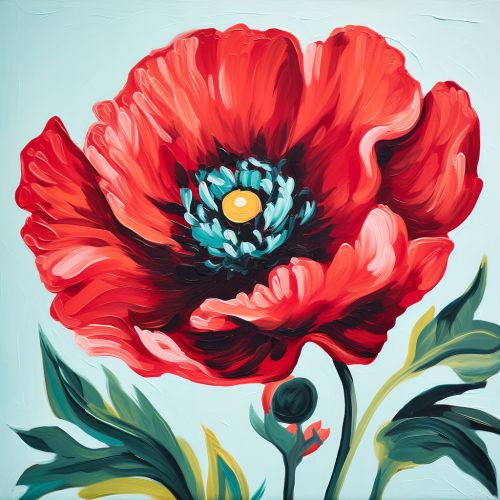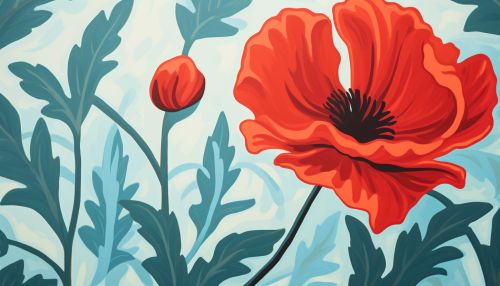Georgia O'Keeffe
Early Life
Georgia O'Keeffe was born on November 15, 1887, in a farmhouse near Sun Prairie, Wisconsin. Her parents, Francis Calyxtus O'Keeffe and Ida (Totto) O'Keeffe, were dairy farmers. She was the second of seven children. O'Keeffe's life-long love for art was fostered by her mother, who encouraged her to be creative at a young age. In 1905, O'Keeffe began studying at the School of the Art Institute of Chicago, where she learned the techniques of traditional realist painting.
Artistic Development
In 1907, O'Keeffe moved to New York City to study at the Art Students League of New York. Here, she studied under William Merritt Chase, who introduced her to the principles of modernism. In 1912, O'Keeffe attended a summer course at the University of Virginia, where she was introduced to the innovative ideas of Arthur Wesley Dow. Dow's emphasis on composition and design had a profound influence on O'Keeffe's work, leading her to experiment with abstract forms and to develop her own unique style.
Career
O'Keeffe's first solo exhibition was held at the 291 gallery in New York City in 1917. The gallery was run by the photographer Alfred Stieglitz, who became O'Keeffe's lifelong partner and promoter. O'Keeffe's work was well received, and she quickly became a central figure in the American modernist movement.
In the 1920s, O'Keeffe began creating large-scale paintings of natural forms, such as flowers, at close range. These works, which include Black Iris (1926) and Oriental Poppies (1928), are some of her most iconic. In these paintings, O'Keeffe used bold colors and simplified shapes to convey the essence of her subjects.
In 1929, O'Keeffe began spending part of each year in New Mexico. The stark landscape, distinctive architecture, and local culture of the Southwest had a profound influence on her work. She began to paint desert scenes, animal skulls, and architectural forms, such as the Ranchos de Taos Church. These works are characterized by their stark simplicity, bold use of color, and strong, dynamic compositions.
Later Life and Legacy
O'Keeffe continued to paint and exhibit her work throughout the 1940s and 1950s. In 1946, she was honored with a retrospective at the Museum of Modern Art in New York City, the first given by that institution to a woman artist. After Stieglitz's death in 1946, O'Keeffe moved permanently to New Mexico, where she lived until her death in 1986.
O'Keeffe's work has had a lasting impact on American art. Her innovative approach to composition and form, her exploration of the natural world, and her pioneering role as a woman in the arts have made her a key figure in the history of modernism. Her work is held in major museums around the world, and she continues to be celebrated for her unique vision and artistic achievement.


